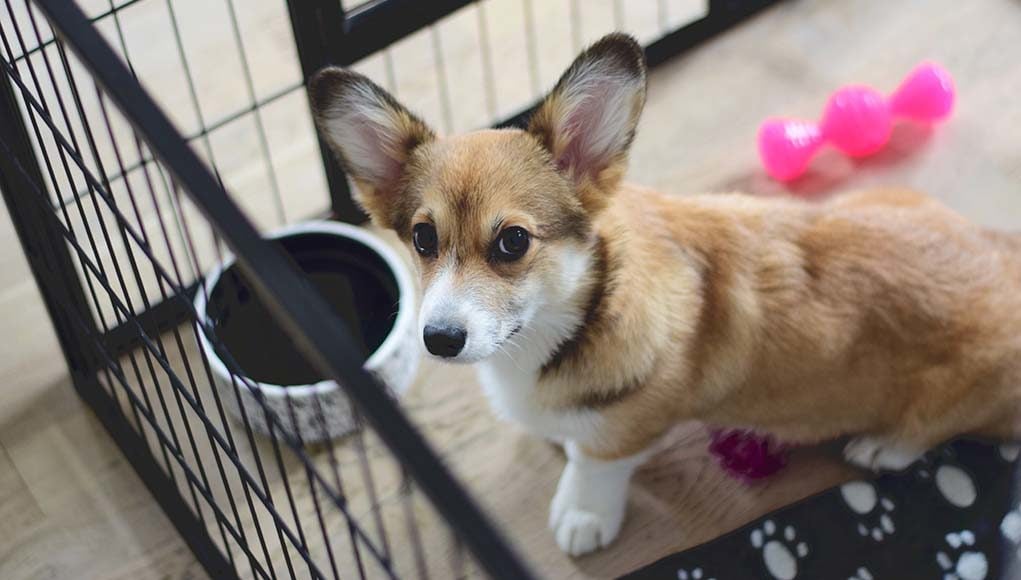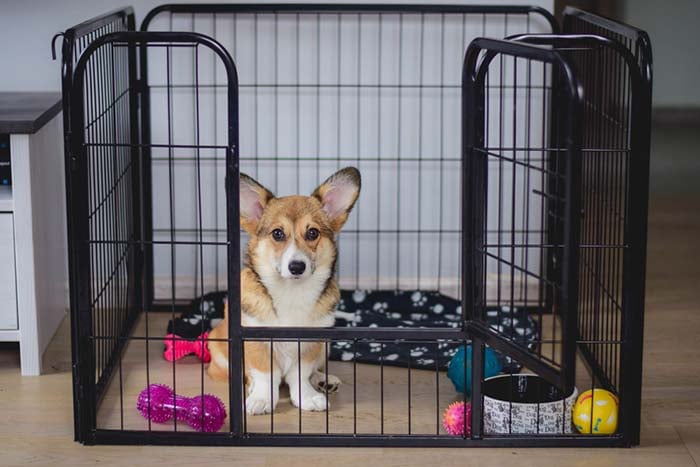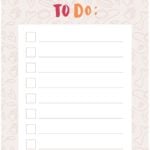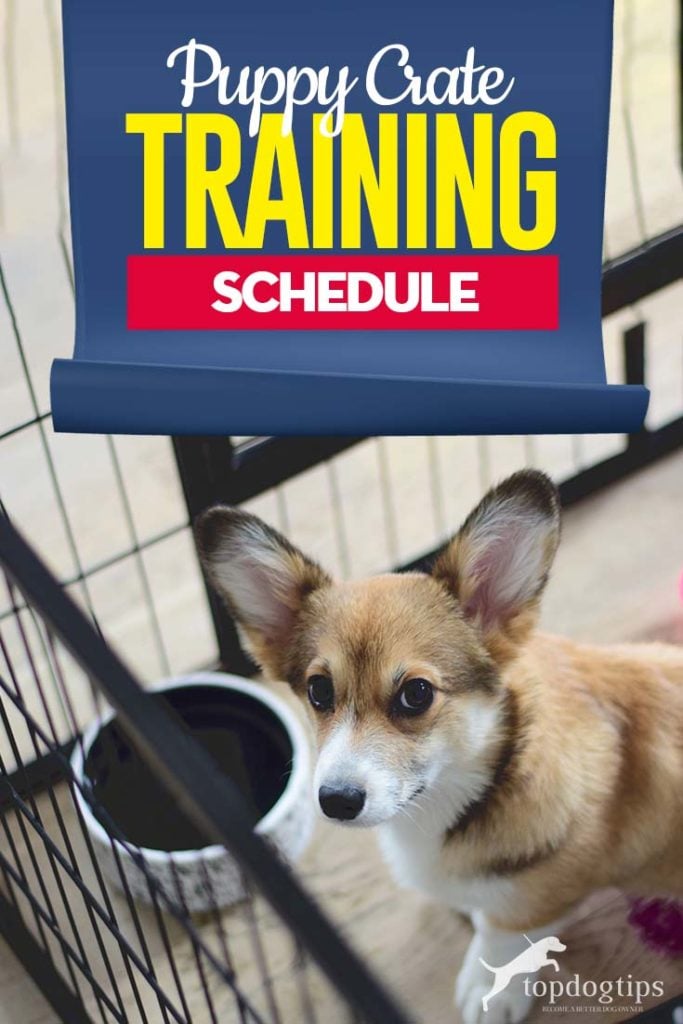Crate training a puppy has many benefits, both for you and the young dog, but it has to be done correctly. Because dogs are creatures of habit, they need to have a routine. The best way to ensure success with crate training a dog is to have a very specific puppy crate training schedule that you can stick to.
Pick the Right Crate
Picking the right crate for your puppy is the first important step. The size of the crate should only be big enough for the dog to stand up, turn around and lie back down. If it's too small, they will be uncomfortably cramped, and if it's too big, puppies will do their potty business in the back of it.
Measure your dog from the end of the nose to the base of the tail, then add two inches. This, combined with the use of crate size chart, will generally result in a good fit.
Dog crates also come in a variety of styles. Which type is best for you depends on your pet's personality, age, how you're planning on using it, and the environment the crate is placed in. The four most popular types of dog crates are:
- Plastic – moderately strong and tough crates with a plastic door that latches closed. They're a popular choice among pet owners because they tend to be fairly mobile and decent for travel. They're cheap and easy to clean, but they don't have the best looking designs.
- Fabric (soft) – these are lightweight and fold-able soft sided crates. They tend to look good and are comfy, cozy for pets, but they may not be the best choice for potty and crate training puppies; they are easier to escape from and not easily cleaned.
- Wire (metal) – strong and durable crates that can be adjusted using a barrier for growing puppies. They are not attractive but are very affordable and provide good ventilation and 360-degree viewing. These are also good for crate training a puppy, and are perfect for dogs that chew a lot.
- Decorative (wood) – wooden dog crates are the most expensive, but also the best looking ones. They fit nicely with home decor, they're strong and sturdy, but aren't always easy to clean and an aggressive chewer may do damage to them as well. They're also not travel-friendly as wooden crates tend to be very heavy.
If you're working on developing a puppy crate training schedule, note that some products may be better for this, and there are special crates for training puppies.
Teach the “Crate” Commands
There are only a few commands you'll need for a successful puppy crate training schedule, which are: “go in” and “go out.” You can use any other words you are comfortable with, as long as you keep them short and stay consistent in their usage.
Step #1: Holding a treat in your hand and standing in front of the open crate, tell your puppy to “go in.” Toss the treat inside the crate to encourage the action. When the puppy enters the crate, praise them with the command and give the pup another treat.
Step #2: Immediately after you say “go out,” toss another treat outside the crate. When your puppy exits the crate, once again praise and reward them, using the command word.
Step #3: Keep repeating this process until your puppy is comfortable and understands how to enter and leave the crate.
Step #4: Now, test your dog's command knowledge by saying “go in” without tossing any treats into the crate. If your pup does so, then praise and reward with a treat after. Repeat this process with the “out” command.
Step #5: Once your puppy has mastered the above steps, it's time to start closing the crate door. Repeat the “go in” command. After the puppy enters the crate, praise them and give them treat, then close the crate door. Wait a few seconds. Open the crate door and say “out.” Praise your puppy with words, not treats. Repeat this exercise until your puppy is comfortable with the process.
Step #6: Extend the length of time your puppy is in the crate with the door closed. Start out with one minute, then two, and so forth.
Crates for dogs should be used as safe haven – a place where they go to rest; they should never be used as punishment. Thus, you will want to open the door before your dog begins to whine and fuss over being in a crate so they are always associating the crate with something “good” instead of a negative place.
Once your puppy stays comfortable in a crate for five minutes without fussing and with you out of sight, move up to 15 minutes, then 30 minutes, then one hour, then two hours. For these extended time frames, be sure your puppy has toys or favorite chews in there. Crate time must always be associated with fun, peace and relaxation.
Puppy Crate Training Schedule
As soon as you begin, follow the puppy crate training schedule at all times, so the dog knows what to expect each time and each day. This helps relieve anxiety and creates a consistent atmosphere for the pet.
Puppies can hold their bladder for one hour per month of age (e.g. two-month-old puppy can hold their bladder for two hours). However, there are exceptions to this rule, such as small breeds unable to hold their bladders for as long. Until your puppy learns bladder control to avoid accidents, you should let them out at least every 1-3 hours.
A general puppy crate training schedule starts with preparations in the morning. Here's what a day may look for you before it's time to work on crate training:
15 minutes – Morning, wake up. Take the puppy out of the crate and immediately go outside for a bathroom break.
15 to 20 minutes. Explore the outside, let your puppy go to the bathroom and investigate the surroundings.
30 minutes. Go inside, have breakfast. Your puppy will eat, drink and digest.
15 minutes. Half an hour or so after eating, go back outside for another bathroom break.
10 to 30 minutes. Inside or outside playtime with the dog: fetch, tug, chase, toys and whatnot.
1 to 2 hours. Now it's time for the crate. Use the commands to get your puppy into the crate, provide them with toys or other things to keep the dog occupied.
Rinse and repeat every single day until crate becomes part of the dog's routine.
Below is a sample puppy crate training schedule that most owners use and what their days look like. Print out our sample templates if you need to make notes for this (click the link and download them by “Save As…”)
Daily To Do List
Weekly Dog Planner
Monthly Dog Schedule
Dog Notes
Sample Puppy Crate Training Schedule
MORNING
7:00 am – Out of the crate, and outside for potty
7:15 am – Playtime
7:30 am – Feeding
8:00 am – Outside potty again
8:15 am – More play
9:00 am – Inside crate
11:00 am – Potty
AFTERNOON
12 pm: Potty
12:15 pm – Playtime
12:30 – Inside the crate
2:30 pm – Potty
2:45 pm – Play
3:30 pm – Potty
3:45 pm – Playtime
4:00 pm – Inside crate
6:00 pm – Potty
EVENING
6:15 pm – Playtime
6:45 pm – Feeding
7:00 pm – Potty
7:15 pm – Play
7:30 pm – Crate
9:30 pm – Potty
9:45 pm – Playtime
10:30 pm – Potty
10:45 pm – Play
11:00 pm – Back into the crate for the night.
This general schedule may be modified to suit individual schedules and individual puppies.
At the Tail's End
Young puppies haven't yet learned how to hold their bladder, so you'll need to keep that in mind when developing your puppy crate training schedule. Do this with simple commands, plenty of praise, and rewards for a job well done. Once this is accomplished, get the puppy onto a more defined schedule so they become accustomed to that routine, which will help them to avoid accidents, stress, anxiety and stay calm and happy.
READ NEXT: 11 Dog Crate Safety Tips [Infographic]



















